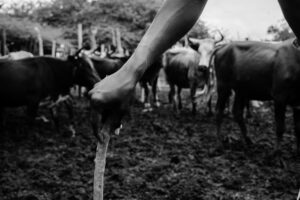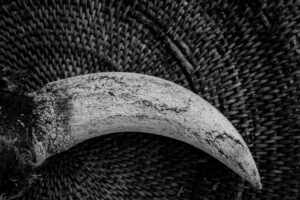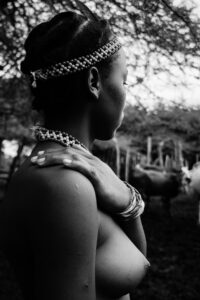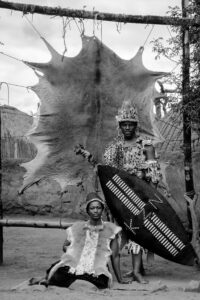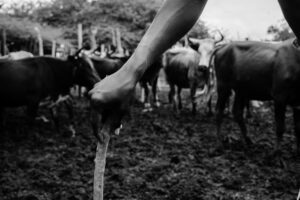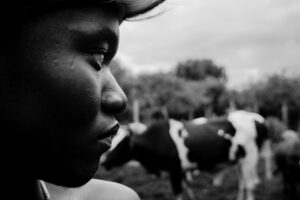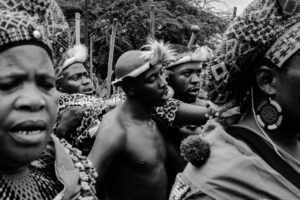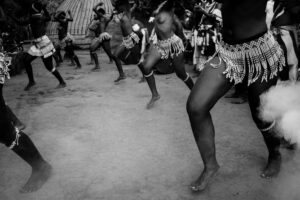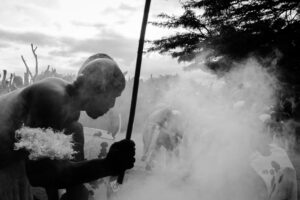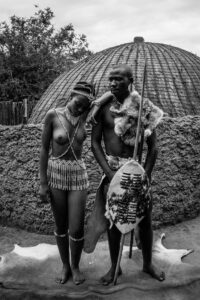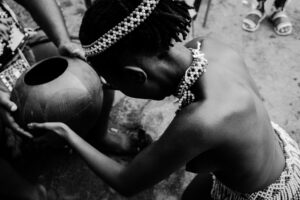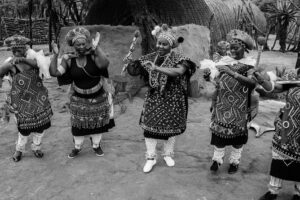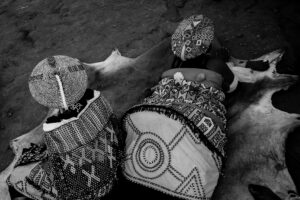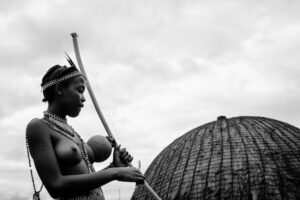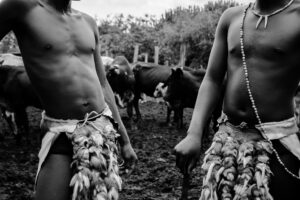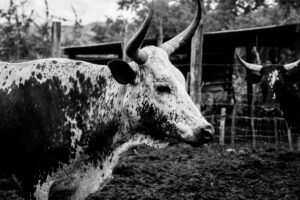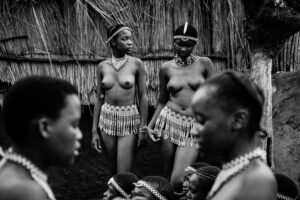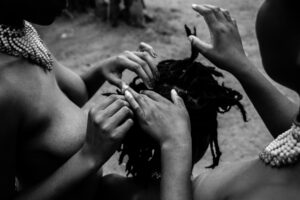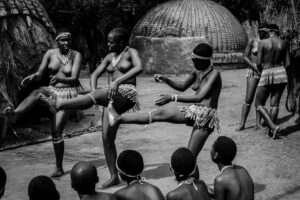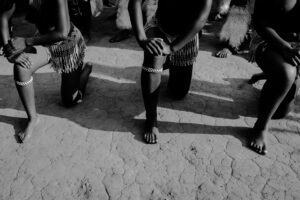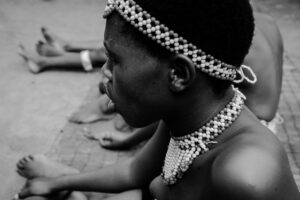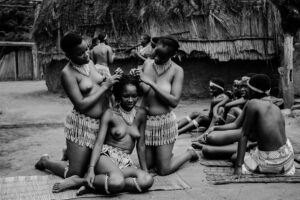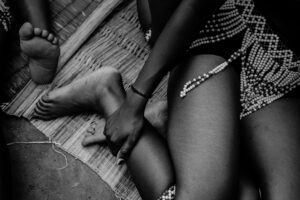Mandisa Buthelezi
Photographer
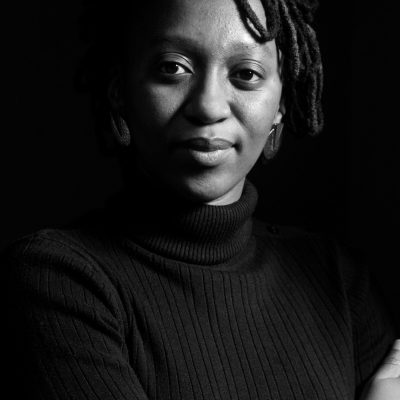
English
isiZulu
English
Mandisa Buthelezi is part of the zeitgeist of South African photo makers re-imagining contemporary photography. Her images are informed by her culture and lived experiences of heritage and spirituality, all the while revisiting historical narratives. Her perspective on cultural history is a form of decolonisation of the photographic medium through reclaiming stories and elevating historical events with an African feminist lens. In her series, UBhuku LukaMenzi, Mandisa’s work establishes new narratives about the KwaZulu-Natal landscape, and shapes contemporary visual archives. UBhuku LukaMenzi, revisits the story of Princess Mkabayi KaJama: King Shaka’s aunt, who was dismissed for presenting herself as a strong woman. “I was really taken by the fact that she had so much power as a royal woman of the Zulu monarchy,” explains Buthelezi. “She was in the centre of politics to such an extent that she appointed herself as regent of the throne because her brother, King Senzangakhona (King Shaka Zulu’s father) was too young to take over.” The photos in UBhuku LukaMenzi are not re-enactments, but new ways of approaching documentary photos, by introducing a narrative from another time. The photographs are black and white and graded with a granular texture. As a collection, the series translates as a visual story, with bits and pieces of the Princess Mkabayi legend. For instance: in one image there is a calm setting, with women doing each other’s hair. Juxtaposed to this is a frenetic frame with rising dust and dancing feet. If we are to connect the images directly to the story of the Princess, they can be read as moments of community followed by uprising in Mkabayi’s life. This article has been revised to suit the Contemporary Archive Project, and was first published in the Mail & Guardian, titled Talking Bodies: Photographers use self-portraits to tell stories, 17 Oct 2020.
isiZulu
UMandisa Buthelezi uyingxenye yomoya yabakhi bezithombe baseNingizimu Afrika abaphinde bacabange ukuthwebula izithombe zesimanje. Izithombe zakhe zaziswa isiko lakhe kanye nezehlakalo ahlangabezane nazo ngokwamagugu nangokomoya, sonke lesi sikhathi ephindela ukulandisa okungokomlando. Umbono wakhe ngomlando wamasiko uwuhlobo lokususa ikoloni endaweni yezithombe ngokubuyisela izindaba kanye nokuphakamisa izenzakalo zomlando ngeso labesifazane base-Afrika. Ochungechungeni lwakhe, UBhuku LukaMenzi, umsebenzi usungula izindaba ezintsha mayelana nesimo saKwaZulu-Natali, futhi ulolonge izinqolobane ezibukwayo zesimanje. UBhuku LukaMenzi, lubuyekeza indaba yeNkosazana uMkabayi KaJama: Ubabekazi weNkosi uShaka, owaxoshwa ngokuziveza njengowesifazane onamandla. “Impela kwangithatha ukuthi unamandla amakhulu ebukhosini bukaZulu,” kuchaza uMandisa. “Wayengene shi kwezombusazwe kangangokuthi waze waqokwa njengebamba lobukhosi ngenxa yokuthi umfowabo, iNkosi uSenzangakhona (uyise weNkosi uShaka Zulu) wayemncane kakhulu ukuba athathe izintambo.” Izithombe eziku-UBhuku LukaMenzi azikona ukulingisa, kodwa izindlela ezintsha zokusondela ezithombeni zedokhumentari, ngokwethula ukulandisa kwesinye isikhathi. Izithombe zimnyama futhi zimhlophe futhi zihlelwe ngokuhleleka okungaguquki. Njengeluhla, lolu chungechunge luhumusha njengendaba ebonwayo, enezingcwezana nezingcezu zenganekwane yeNkosazana uMkabayi. Isibonelo: esithombeni esisodwa kukhona indawo ezolile, abesifazane belukana. Kuhlanganiswe loluhlaka oluphithizelayo olunothuli oluphuqukayokayo nezinyawo ezidansayo. Uma sizoxhumanisa lezi zithombe ngqo nendaba yeNkosazana, zingafundwa njengezikhathi zomphakathi ezilandelwa ukuvukela umbuso empilweni kaMkabayi. Lesi sihloko sibuyekeziwe ukuze sivumelane ne-Contemporary Archive Project, futhi yashicilelwa okokuqala ku-Mail & Guardian, enesihloko esithi Talking Bodies: Mhla zingama-17 kuMfumfu kowezi-2020, abathwebuli bezithombe basebenzisa izithombe zabo ukuze baxoxe izindaba.
Niamh Walsh-Vorster
